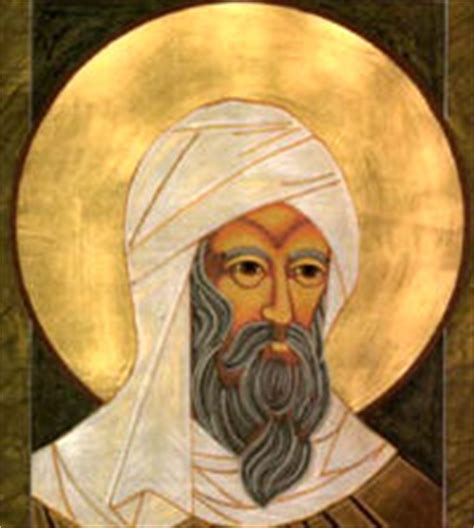
4 December
St. John Damascene (c. 675 – 749 )
Priest and Doctor of the Church
Born: c. 675 or 676 Damascus, Bilad al-Sham, Umayyad Caliphate
Died: 4 December 749 Mar Saba, Jerusalem, Bilad al-Sham, Umayyad Caliphate
Patronage: Pharmacists, icon painters, theology students
St. John Damascene was a learned theologian who carefully gathered together and transmitted to us the teaching of the Greek Fathers, and is thus one of the most trustworthy witnesses to oriental tradition. He also wrote many liturgical hymns still in use today. St. John Damascene died in 749. Leo XIII proclaimed him a Doctor of the universal Church.
COLLECT PRAYER
Grant, we pray, O Lord, that we may be helped by the prayers of the Priest Saint John Damascene, so that the true faith, which he excelled in teaching, may always be our light and our strength. Through our Lord Jesus Christ, your Son, who lives and reigns with you in the unity of the Holy Spirit, God, for ever and ever.
Things to Do:
- St. John Damascene has contributed much to the Church through his writings. Read all or part of his most famous work, Exposition of the Orthodox Faith.
- Check out some ideas for Celebrating the Feast of St. John Damascene.
- Learn more about his life and writings.
- He was famous for his opposition to the heresy of the Iconoclasts: you could find out more about this heresy.
- Learn more about Catholic Sacramentals which include statues and images.
- St. John Damascene was made a Doctor of the Church for his efforts to defend the faith, learn to defend the use of religious pictures and objects to your Protestant friends.
St. John Damascene
John of Damascus or Damascene, the last of the Greek Fathers, was one of the principal defenders of the veneration of images against the Iconoclasts, who condemned this practice.
When John was born, Damascus was under the jurisdiction of caliphs, but Christians were allowed to hold high offices. John’s father was chief revenue officer of the caliph and a sterling Christian. He entrusted his son’s education to a monk, Cosmas, who had been brought from Sicily as a slave, and who schooled the young man in theology, the sciences, and poetry.
John succeeded his father in office, and while living at the court gave an example of a model Christian. But he had set his sights higher, and after resigning his office he became a monk at St. Sabbas monastery near Jerusalem. Here he spent his time writing books and composing hymns. When Leo the Isaurian issued decrees against the veneration of images, John took up the challenge and wrote treatises defending this ancient practice.
At this time the Patriarch of Jerusalem, desirous of having John among his clergy, ordained him priest and brought him to Jerusalem. After some time, however, John returned to the monastery and devoted the rest of his life to writing. His most important work is his Fountain of Wisdom, in which he compiled and collated the teachings of all the great theologians before him; this is the first attempt at a Summa Theologica, a summary of philosophy and theology, that has come down to us. John’s writings are a rich treasure of ancient traditions, and are held in high esteem. Pope Leo XIII declared him a Doctor of the Church in 1890.
St. John was such a great orator that he was known as Chrysorrhoas (“golden-stream”). He was the last of the Greek Fathers of the Church, and the first of the Christian Aristotleans. He also adapted choral music for use in the liturgy. His eloquent defense of Christian images has given him the title of “Doctor of Christian Art.”
— A Saint A Day © 1957
Source: Catholic Culture